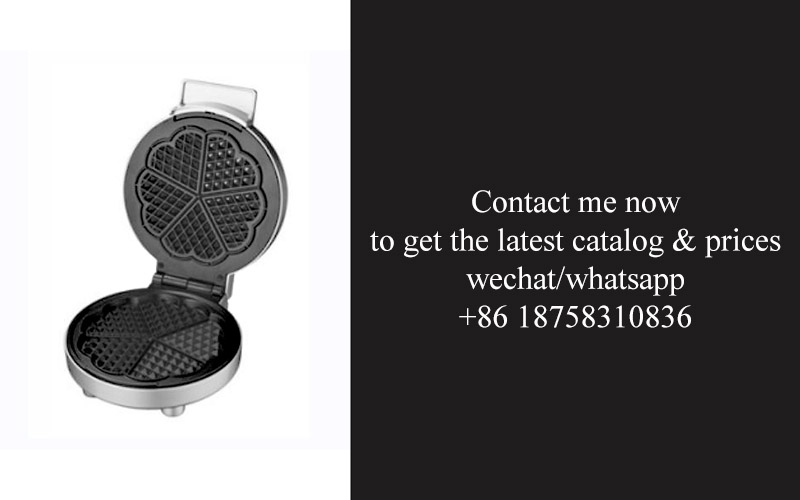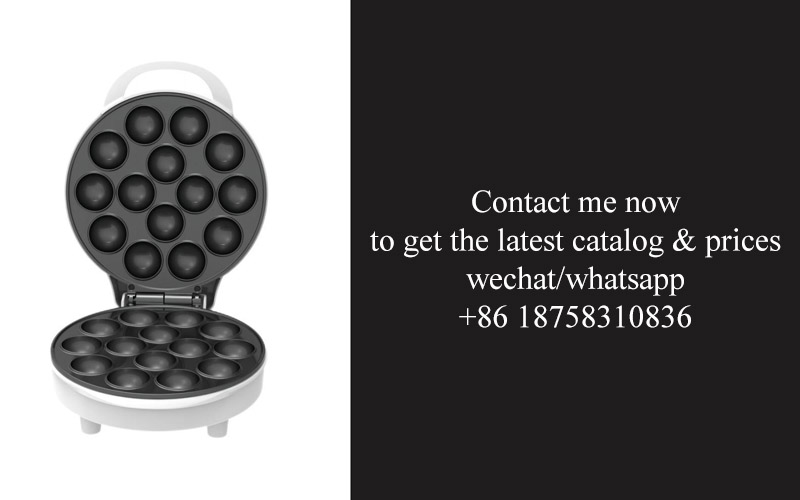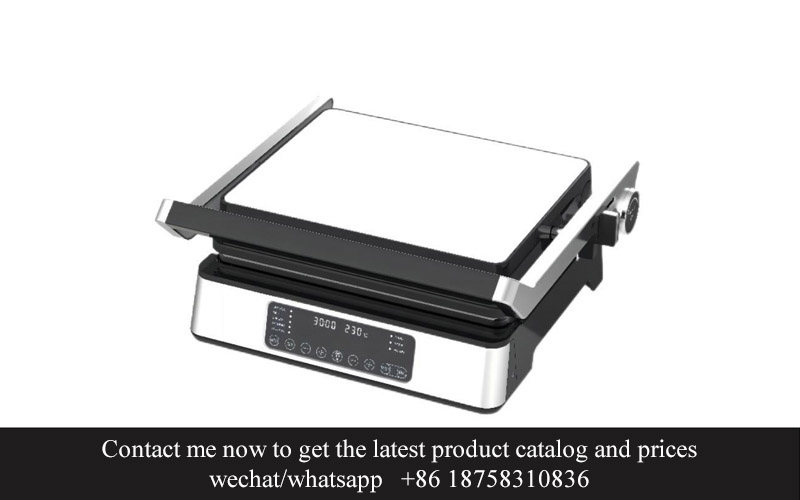Address
304 North Cardinal
St. Dorchester Center, MA 02124
Work Hours
Monday to Friday: 7AM - 7PM
Weekend: 10AM - 5PM
Address
304 North Cardinal
St. Dorchester Center, MA 02124
Work Hours
Monday to Friday: 7AM - 7PM
Weekend: 10AM - 5PM

In the ever-evolving world of kitchen appliances, there’s a growing emphasis on health, safety, and sustainability. As consumers become more health-conscious, the demand for cookware that meets stringent quality standards has surged. One such standard that stands out is the LFGB (Lebensmittel- und Futtermittelgesetzbuch), a German regulation that ensures the safety of kitchenware. This article delves into the significance of LFGB compliance in the cookware industry, exploring how it influences product design, consumer preferences, and the environmental impact of kitchen appliances.
In today’s fast-paced culinary world, innovation is the heartbeat of the kitchen appliance industry. One such innovation that’s capturing the imagination of chefs and home cooks alike is the rise of LFGB compliant non-stick coatings. These cutting-edge coatings are not just changing the way we cook; they’re setting new standards for health, performance, and sustainability.
The sleek, easy-to-clean surfaces of non-stick cookware have long been a favorite among busy cooks, but the introduction of LFGB compliant coatings has taken this convenience to a whole new level. The LFGB, or Lebensmittel- und Futtermittelbetrugsbekämpfungsgesetz, is a stringent German food safety regulation that ensures products are safe for consumption. Cookware with LFGB compliant non-stick coatings promises a healthier cooking experience without compromising on the convenience that non-stick technology offers.
Gone are the days when non-stick cookware was associated with harmful chemicals like PFOA and PTFE. The new LFGB compliant coatings use advanced materials that are free from these toxic substances, making them a safer choice for both the cook and the environment. These coatings are designed to last, ensuring that your cookware remains non-stick for years to come.
One of the standout features of LFGB compliant non-stick coatings is their exceptional durability. They can withstand high temperatures and frequent use without losing their non-stick properties. This means you can cook at higher heats without worrying about food sticking to the pan, which not only saves time but also preserves the flavor of your dishes.
The sleek finish of LFGB compliant non-stick coatings also adds a touch of elegance to any kitchen. Whether you’re a minimalist who appreciates clean lines or a fan of vibrant colors, there’s a non-stick option out there to match your style. The ability to cook a variety of dishes with the same pan without the need for excessive oil or butter not only makes for healthier meals but also reduces the amount of fat and calories in your cooking.
In the European and American markets, top kitchen appliance brands are jumping on the LFGB compliant non-stick bandwagon. From high-end cookware lines to budget-friendly sets, these brands are redefining what it means to cook safely and efficiently. Consumers are taking notice, and the demand for LFGB compliant non-stick cookware is soaring.
Health-conscious buyers are leading the charge, seeking out products that align with their values. The peace of mind that comes with knowing their cookware is free from harmful chemicals is a powerful motivator. It’s not just about cooking healthier meals; it’s about creating a healthier lifestyle.
But it’s not just about health; LFGB compliant non-stick coatings are also environmentally friendly. By reducing the need for excessive cleaning agents and minimizing food waste, these coatings contribute to a more sustainable kitchen. The reduced environmental impact is yet another reason why these coatings are becoming the gold standard in the kitchen appliance industry.
As technology advances, the possibilities for LFGB compliant non-stick coatings are endless. Imagine cookware that not only performs better but also adjusts to your cooking style, whether you prefer a gentle simmer or a high-heat sear. The future of non-stick cookware is bright, and it’s being shaped by the demand for healthier, more sustainable, and innovative products.
In the kitchen, innovation is key to enhancing the cooking experience. LFGB compliant non-stick coatings are not just a trend; they are a game-changer. They offer a healthier alternative to traditional non-stick coatings, and their performance and durability make them a favorite among both professional chefs and home cooks. As the industry continues to evolve, the rise of LFGB compliant non-stick coatings is a testament to the power of innovation and the consumer’s growing preference for safe, sustainable, and high-quality kitchen appliances.

LFGB compliance is more than just a legal requirement; it’s a commitment to health and safety that’s becoming increasingly important in the kitchen appliance industry. The German Food, Drug, and Cosmetic Act (LFGB) sets stringent standards for the materials used in products that come into contact with food, ensuring they are free from harmful substances.
One of the primary reasons LFGB compliance is a game-changer is its focus on the quality of non-stick coatings. These coatings are a staple in many kitchen appliances, from pans to baking sheets, and they need to be both effective and safe. Under LFGB regulations, non-stick coatings must be free from PFOA (perfluorooctanoic acid) and PTFE (polytetrafluoroethylene), which are known carcinogens and have been linked to various health issues.
The LFGB standard also demands that non-stick coatings are durable and long-lasting, reducing the need for frequent replacements that could potentially lead to more waste. This not only benefits the environment but also ensures that consumers have a reliable and safe product that stands the test of time.
In the pursuit of LFGB compliance, manufacturers are turning to alternative coatings that are just as effective as traditional PFOA and PTFE-based coatings. One such alternative is ceramic non-stick, which is gaining popularity for its eco-friendliness and health benefits. Ceramic coatings are free from harmful chemicals and are known for their excellent non-stick properties, making them a favorite among health-conscious consumers.
The process of achieving LFGB compliance is rigorous and involves extensive testing. Manufacturers must ensure that their products meet the stringent limits for heavy metals, such as lead and cadmium, which can leach into food and pose health risks. This thorough inspection process is a testament to the commitment to quality that LFGB compliance represents.
For consumers, understanding LFGB compliance is crucial when making purchasing decisions. It means that the kitchen appliances they choose are not only safe to use but also adhere to some of the highest standards in the world. This peace of mind is invaluable, especially when it comes to products that are used daily and come into direct contact with food.
Another aspect of LFGB compliance that stands out is the emphasis on the labeling of products. Under LFGB regulations, manufacturers must clearly indicate if their non-stick coatings contain any substances that are not permitted. This transparency empowers consumers to make informed choices and avoid products that may contain harmful chemicals.
The health benefits of LFGB compliant kitchen appliances are undeniable. By avoiding PFOA and PTFE, consumers can reduce their exposure to potential carcinogens. This is particularly important for individuals with sensitivities or allergies to these chemicals, as well as for those who are looking to live a healthier lifestyle.
Furthermore, LFGB compliance encourages innovation in the kitchen appliance industry. As manufacturers strive to meet these high standards, they are pushed to develop new technologies and materials that are safer and more sustainable. This not only benefits consumers but also contributes to a more environmentally conscious approach to product development.
In conclusion, LFGB compliance is not just a legal requirement; it’s a symbol of quality and safety in the kitchen appliance industry. By adhering to these stringent standards, manufacturers are able to produce products that are not only effective but also free from harmful substances. For consumers, this means choosing kitchen appliances that are not only reliable but also contribute to a healthier lifestyle. As the demand for LFGB compliant products continues to grow, it’s clear that this standard is shaping the future of the kitchen appliance market for the better.

The non-stick revolution has swept through the kitchen appliance industry, transforming how we cook and clean. At the heart of this change is the stringent LFGB (Lebensmittel- und Futtermittelbuch, or Food and Feed Code) standards. These regulations have set a new benchmark for safety and quality, reshaping the way manufacturers approach non-stick coatings.
Manufacturers are now going beyond the basics to ensure that their non-stick cookware is not only convenient but also safe for daily use. The LFGB compliance mandates that cookware be free from harmful substances like perfluorooctanoic acid (PFOA), a chemical that has raised health concerns due to its potential toxicity. This shift has prompted innovators to develop new, safer alternatives.
These new coatings often utilize materials like PTFE (polytetrafluoroethylene), which is the same substance found in traditional non-stick cookware but with a twist. Manufacturers are incorporating it into cookware with stricter controls over the manufacturing process, ensuring that the PTFE is applied in such a way that it remains non-toxic throughout the product’s lifetime.
Cookware companies are investing heavily in research and development to meet LFGB standards. This includes testing for the presence of any potential carcinogens or harmful chemicals that could leach into food. The result is a new wave of cookware that boasts exceptional non-stick properties without the risks associated with older coatings.
The non-stick revolution is also being driven by consumer demand. Health-conscious buyers are increasingly seeking out products that adhere to high safety standards, and the LFGB mark is becoming a sought-after certification. Consumers are no longer willing to compromise between convenience and safety, and this has pushed the industry to innovate.
Cookware with LFGB compliant non-stick coatings is not just about safety; it’s also about sustainability. By using materials that are less harmful to the environment and to human health, these products contribute to a more eco-friendly kitchen. This dual focus on health and the environment has given rise to a new category of cookware that appeals to a broad spectrum of consumers.
Another significant aspect of the non-stick revolution is the improvement in durability. With the right application of non-stick coatings that meet LFGB standards, cookware is not only safe but also long-lasting. This durability means that consumers can enjoy the convenience of non-stick cooking without the need for frequent replacements, which in turn reduces waste and promotes a more sustainable approach to cooking.
As the industry evolves, we’re seeing a blend of traditional craftsmanship and cutting-edge technology. Skilled artisans are working alongside chemists and engineers to create cookware that not only performs well but also looks stylish and modern. The result is a wide array of cookware that caters to various tastes and cooking styles, all while adhering to the LFGB standards.
Moreover, the non-stick revolution has opened up new possibilities for cookware design. With the assurance of safety and non-toxicity, manufacturers are experimenting with different shapes, sizes, and materials. This creative freedom has led to cookware that is not only functional but also a beautiful addition to any kitchen.
Educational campaigns and awareness programs are also playing a crucial role in the non-stick revolution. Consumers are being educated about the importance of LFGB compliance and the health benefits of choosing non-stick cookware that meets these stringent standards. As awareness grows, so does the demand for these products, further spurring the industry to innovate.
In conclusion, the non-stick revolution, driven by LFGB standards, is reshaping the kitchen appliance industry. It’s not just about non-stick coatings anymore; it’s about the entire ecosystem of safe, durable, and sustainable cookware that enhances the cooking experience without compromising on health or the environment.

LFGB compliant non-stick coatings have revolutionized the kitchen appliance industry, offering a myriad of benefits that enhance cooking experiences and prioritize health and safety. Here’s a closer look at some of the key advantages these coatings bring to the table.
Cooking with ConfidenceOne of the most immediate benefits of LFGB compliant non-stick coatings is the peace of mind they provide. These coatings are rigorously tested to meet the strict standards set by the German Food, Drug, and Cosmetic Act (LFGB), ensuring that they do not leach harmful chemicals into food. This means that cooks can enjoy non-stick cookware without worrying about potential health risks, such as the presence of PFOA (perfluorooctanoic acid) or PTFE (polytetrafluoroethylene).
Ease of Cooking and CleaningThe primary appeal of non-stick cookware is its exceptional non-stick properties, which make cooking a breeze. Whether you’re sautéing, frying, or simmering, foods release easily from the surface, reducing the need for excessive oil or butter. This not only cuts down on calories but also makes for a healthier meal. Moreover, the non-stick surface simplifies the cleaning process, as food particles don’t stick, and spills can be wiped away with minimal effort.
Longevity and DurabilityLFGB compliant non-stick coatings are designed to last. With proper care, these coatings can maintain their non-stick qualities for years, outlasting many traditional cookware options. The durability of these coatings means that you won’t have to replace your cookware as frequently, saving you money in the long run.
Healthier CookingThe use of less oil or butter with non-stick coatings can lead to healthier cooking practices. This is especially beneficial for those looking to reduce their fat intake or manage their cholesterol levels. By using non-stick cookware, you can achieve a similar texture and flavor to fried foods without the health drawbacks.
Environmentally FriendlyThe reduction in oil and butter used with non-stick coatings also has environmental benefits. Less oil means fewer fats going down the drain, which can contribute to clogged pipes and pollution in waterways. By choosing LFGB compliant non-stick cookware, consumers are taking a small but significant step towards a greener kitchen and a healthier planet.
Versatility in Cooking TechniquesNon-stick coatings allow for a wide range of cooking techniques that might be challenging with traditional cookware. For instance, delicate fish can be gently flipped without breaking, and eggs can be cooked to a perfect soft or hard texture without sticking to the pan. This versatility opens up new possibilities for culinary exploration and experimentation.
Safe for All Types of CooktopsAnother advantage of LFGB compliant non-stick coatings is their compatibility with various cooktops, including induction, gas, electric, and ceramic. This means that cooks can use their non-stick cookware without worrying about compatibility issues, making it a versatile addition to any kitchen.
Enhanced Cooking PerformanceThe non-stick surface of LFGB compliant cookware allows for more even heat distribution, which is crucial for achieving consistent cooking results. Foods cook more evenly, reducing the risk of burning and ensuring that your meals are cooked to perfection every time.
Improved Nutritional RetentionCooking with less oil or butter not only reduces fat intake but also helps to retain more of the nutrients in the food. The non-stick surface prevents food from sticking and losing its nutritional value, which is particularly important for delicate vegetables and lean proteins.
Cooking for Health and StyleThe benefits of LFGB compliant non-stick coatings extend beyond practicality; they also contribute to the aesthetic appeal of kitchen appliances. The sleek, easy-to-clean surfaces of non-stick cookware add a touch of modern elegance to any kitchen, making cooking a more enjoyable and visually appealing experience.
In conclusion, LFGB compliant non-stick coatings have transformed the kitchen appliance industry by offering a range of benefits that cater to health-conscious consumers and cooking enthusiasts alike. From health and environmental considerations to the ease of cooking and cleaning, these coatings are a testament to the continuous innovation in kitchen technology.

The European and American kitchen appliance markets are seeing a significant shift towards adhering to the stringent LFGB (Legislative Framework for the German Federal Institute for Risk Assessment) standards. These brands are not just complying with regulations; they are redefining what it means to cook safely and efficiently. Here’s a look at some of the top players embracing these high standards:
In Germany, where LFGB was first established, brands like Tefal have long been synonymous with non-stick technology. They’ve taken LFGB compliance to heart, ensuring that every pan and pot they produce is free from harmful substances, making them a go-to choice for health-conscious consumers.
In the United States, All-Clad has been a leader in the industry, known for their high-quality cookware. The brand has expanded its commitment to quality by adopting LFGB standards, offering consumers peace of mind that their pots and pans are safe to use.
Cuisinart, another American staple in the kitchen appliance sector, has also jumped on board. With a wide range of cookware, from non-stick to stainless steel, the brand’s LFGB compliance is a testament to their dedication to providing healthy cooking solutions.
In Europe, Zwilling J.A. Henckels, the renowned knife manufacturer, has extended its expertise to the cookware market. By adhering to LFGB standards, they’ve introduced a range of non-stick pans that are as durable as they are safe, appealing to both professional chefs and home cooks alike.
When it comes to cast iron, Lodge, a brand rooted in American craftsmanship, has embraced LFGB compliance. Their cast iron skillets are not only timeless but also free from PFAS, PFOA, and other harmful chemicals, ensuring that families can cook their favorite recipes without any health concerns.
On the other side of the Atlantic, Le Creuset, a French icon in the cookware world, has integrated LFGB standards into their manufacturing process. Known for their enameled cast iron, the brand now offers a wide array of cookware that is both visually stunning and safe to use, catering to the discerning tastes of gourmet enthusiasts.
In the realm of ceramic cookware, Xtrema stands out. The brand has gained a loyal following for its durable and eco-friendly ceramic non-stick cookware, which is LFGB compliant. This commitment to safety and sustainability has positioned Xtrema as a preferred choice for those looking to minimize their environmental footprint while cooking.
American cookware company, Cooks Standard, has also joined the LFGB compliant movement. Their line of cookware is designed to be non-reactive, non-toxic, and non-stick, providing a healthy cooking experience without the need for excessive oil or butter.
While some brands have been in the market for decades, others have emerged as new players, keen to set a new standard for safety. For instance, GreenPan, a relative newcomer, has made a name for itself by offering a range of non-stick pans that are free from PFOA, PFAS, lead, and cadmium, aligning with LFGB standards.
The adoption of LFGB standards by these top European and American kitchen appliance brands is more than just a regulatory move; it’s a cultural shift. Consumers are increasingly aware of the health risks associated with certain cookware coatings and are demanding safer alternatives. In response, these brands are not only ensuring compliance but also leading the charge in innovation, developing new materials and technologies that are both safe and effective.
The rise of LFGB compliant non-stick coatings is not just changing the face of the cookware industry; it’s also influencing other kitchen appliance categories. Brands that once relied on Teflon and similar coatings are now looking for alternatives that meet the same performance standards without the health risks. This push for innovation is leading to advancements in materials science, with new coatings that are not only safe but also long-lasting and easy to clean.
In conclusion, the embrace of LFGB standards by top European and American kitchen appliance brands signifies a significant step towards a healthier kitchen environment. It’s a testament to the power of consumer demand for safer products and a reflection of the industry’s willingness to adapt and evolve. As these brands continue to innovate and lead the way, we can expect to see a new wave of cookware and appliances that are not only safe but also enhance the cooking experience for everyone.

In the world of kitchen appliances, the demand for innovative and functional designs has never been higher. LFGB non-stick coatings have emerged as a game-changer, offering a perfect blend of performance and health benefits. Let’s delve into how these coatings are revolutionizing product designs across the globe.
The sleek, modern look of cookware with LFGB non-stick coatings is not just aesthetically pleasing; it also reflects the cutting-edge technology behind these products. The smooth, uniform surface of the coating makes cleaning a breeze, which is a huge plus for busy cooks who want to spend less time on dishwashing and more time enjoying their culinary creations.
One of the standout features of LFGB compliant non-stick coatings is their exceptional durability. Unlike older coatings that can chip or peel over time, LFGB standards ensure that the non-stick surface remains intact, even after years of use. This means that consumers can invest in cookware that will not only look great but also stand the test of time.
Cookware with LFGB non-stick coatings is not just about ease of cleaning and longevity; it’s also about health. The absence of harmful chemicals like PFOA and PTFE in these coatings means that your food is free from potential contaminants. This is particularly important for families with young children, who are more susceptible to the effects of these substances.
In terms of design, LFGB non-stick coatings allow for a wide range of creative possibilities. The smooth surface can be paired with various colors and patterns, offering a personalized touch to kitchenware. Whether you prefer a minimalist, sleek design or something more vibrant and expressive, there’s an LFGB non-stick coated product out there to match your style.
The ergonomic handles and innovative shapes of cookware with LFGB non-stick coatings are also worth mentioning. These designs are not only comfortable to hold but also enhance the overall cooking experience. From the right angle of the handle to the ease of pouring, every detail is thoughtfully considered to make cooking more enjoyable.
Another exciting aspect of LFGB non-stick coated products is their versatility. They can be used on various types of cooktops, including induction, which has become increasingly popular in modern kitchens. This versatility means that you can invest in a single piece of cookware that can handle a wide range of cooking methods, from searing steaks to simmering sauces.
In the realm of eco-conscious consumerism, LFGB non-stick coatings are a hit. The materials used in these coatings are often more sustainable than traditional non-stick options, and the durability of the cookware means that it is less likely to end up in landfills. This not only aligns with the values of environmentally friendly consumers but also contributes to a healthier planet.
The integration of LFGB non-stick coatings into smart kitchen appliances is another area where innovation is flourishing. Smart cookware with these coatings can offer a range of features, from temperature control to automated cooking programs, all while maintaining the non-stick properties that make cooking a joy rather than a chore.
Brands are also taking advantage of the health benefits of LFGB non-stick coatings to create products that cater to specific dietary needs. For example, cookware designed for low-carb or gluten-free diets can be made with these coatings, ensuring that those with specific dietary restrictions can still enjoy a wide variety of meals without compromising on taste or health.
In the kitchen, the right tools can make all the difference. LFGB non-stick coatings are not just about making cooking easier; they are about enhancing the entire culinary experience. From the sleek, easy-to-clean surfaces to the health benefits and eco-friendly materials, these coatings are transforming the way we interact with our kitchen appliances.
As the demand for healthier, more sustainable, and innovative kitchenware continues to grow, the role of LFGB non-stick coatings in shaping the future of product design is undeniable. They are the bridge between performance and health, allowing consumers to enjoy the best of both worlds in their cooking endeavors.

Health-conscious consumers are increasingly turning to LFGB compliant cookware, recognizing the importance of safety and quality in their kitchenware. Here’s a deeper look into why these buyers prefer LFGB compliant cookware:
Cookware made to LFGB standards is free from harmful chemicals, ensuring that the food cooked in these pots and pans remains uncontaminated. BPA, PFOA, and PFAS are among the toxins often found in non-compliant cookware, which can leach into food and pose health risks. LFGB compliant cookware, on the other hand, adheres to strict regulations that limit or eliminate these harmful substances, making it a healthier choice for consumers who prioritize their well-being.
The demand for LFGB compliant cookware has surged as more people become aware of the potential health risks associated with certain non-stick coatings. With the rise of social media and health-focused influencers, information about the dangers of PFOA and other harmful chemicals has become more accessible. Health-conscious buyers are drawn to LFGB compliant cookware as a safer alternative, seeking peace of mind that their cooking environment is free from potentially harmful substances.
One of the key reasons health-conscious buyers opt for LFGB compliant cookware is the assurance of high-quality materials. LFGB standards are among the most rigorous in the world, ensuring that cookware is made with the finest materials and craftsmanship. This means that LFGB compliant cookware not only prioritizes health but also durability and performance. Consumers who value longevity and reliability in their kitchenware are more likely to choose LFGB compliant products.
Another factor that influences health-conscious buyers is the versatility of LFGB compliant cookware. These products are designed to meet a wide range of cooking needs, from sautéing and stir-frying to baking and roasting. The non-stick coatings allow for easy food release, reducing the need for excessive oil or butter, which can be high in calories and unhealthy fats. This versatility, combined with the health benefits, makes LFGB compliant cookware an attractive choice for those looking to maintain a balanced diet.
Many health-conscious buyers are also environmentally conscious, and LFGB compliant cookware aligns with eco-friendly values. The absence of harmful chemicals means that these cookware sets are not only safe for the consumer but also for the environment. By choosing LFGB compliant cookware, consumers are supporting sustainable practices and reducing their carbon footprint, which is a significant consideration for those who are environmentally aware.
Additionally, the aesthetic appeal of LFGB compliant cookware cannot be overlooked. These products are often designed with sleek, modern aesthetics, which appeals to consumers who not only prioritize health but also appreciate good design. The combination of health, functionality, and style makes LFGB compliant cookware a compelling choice for those who want to elevate their kitchen experience.
Lastly, the growing number of certifications and labels on cookware can be overwhelming for consumers. LFGB compliance stands out as a globally recognized standard, offering a clear and trusted indicator of quality and safety. Health-conscious buyers appreciate the simplicity of this certification, which allows them to make informed decisions without having to decipher complex ingredient lists or worry about potential health risks.
In conclusion, health-conscious buyers prefer LFGB compliant cookware for its safety, quality, versatility, environmental friendliness, aesthetic appeal, and the clarity it provides in an increasingly complex marketplace. As awareness of health and wellness continues to grow, it’s likely that the demand for LFGB compliant cookware will only increase, making it a staple in the kitchens of those who prioritize their health and the health of their families.

The LFGB, or the German Food, Drug, and Cosmetic Act, has emerged as a beacon of quality and safety in the kitchen appliance industry. Its influence on the environmental sustainability of these products is profound, and the impact can be seen in several key areas.
Manufacturers are increasingly aware of the environmental footprint their products leave behind. The LFGB’s stringent regulations on materials and manufacturing processes have prompted a shift towards more sustainable practices. From the sourcing of raw materials to the disposal of appliances at the end of their life cycle, the LFGB-compliant brands are leading the charge in reducing their ecological impact.
One significant change is the move away from harmful chemicals in non-stick coatings. The LFGB bans the use of perfluorooctanoic acid (PFOA) and polytetrafluoroethylene (PTFE), which are known to be toxic and can leach into food over time. This shift not only protects consumer health but also minimizes the environmental contamination that can occur when these substances enter waterways and ecosystems.
The LFGB also emphasizes the use of energy-efficient appliances. By mandating that appliances meet certain energy consumption standards, the act encourages manufacturers to design products that are not only safe for use but also for the planet. This focus on energy efficiency has led to the development of appliances that consume less power, thereby reducing the overall carbon footprint associated with their use.
Recycling and disposal practices are another area where the LFGB has made a significant impact. Appliances that are LFGB-compliant are often designed with recyclability in mind. This means that at the end of their useful life, they can be more easily broken down and their components reused or recycled, rather than ending up in landfills.
The LFGB also addresses the issue of water usage in kitchen appliances. For example, dishwashers and washing machines that meet LFGB standards are required to use less water, which is not only a cost-saving measure for consumers but also a significant step towards water conservation.
Innovation in design has been spurred by the LFGB’s demands for sustainability. Brands are now creating appliances that are not only eco-friendly but also aesthetically pleasing. The integration of smart technology with sustainable materials is becoming more common, offering consumers a seamless blend of convenience and environmental responsibility.
Moreover, the LFGB has encouraged the use of renewable energy sources in the manufacturing process. By doing so, appliance manufacturers are reducing their reliance on fossil fuels and contributing to a cleaner energy grid. This shift is not only beneficial for the environment but also for the long-term health of the planet.
The act has also had a ripple effect on the supply chain. Suppliers are now under pressure to provide materials that are not only LFGB-compliant but also sustainable. This has led to the development of new, eco-friendly materials that can be used in the production of kitchen appliances.
The LFGB’s influence extends beyond the product itself. It has prompted a cultural shift in the kitchen appliance industry, with brands and consumers alike becoming more conscious of their environmental impact. This awareness has sparked a wave of eco-friendly initiatives, from the creation of energy-saving appliances to the implementation of recycling programs.
The LFGB has also played a role in the reduction of electronic waste. By ensuring that appliances are designed for longevity and easy repair, the act helps to extend the life of these products, thereby reducing the amount of waste generated.
In conclusion, the LFGB has had a profound impact on the environmental sustainability of kitchen appliances. By setting high standards for safety, health, and environmental responsibility, the act has encouraged innovation and a more sustainable approach to manufacturing. As consumers become increasingly health and environmentally conscious, the LFGB-compliant brands are well-positioned to lead the way in a greener, more sustainable future.

The evolution of LFGB compliant non-stick technology continues to push the boundaries of what we expect from kitchen appliances. As consumers demand more from their cookware, the industry is responding with innovations that promise to enhance both health and convenience. Here’s a glimpse into the future prospects of this technology.
Materials science is at the forefront of this evolution, with researchers and engineers working tirelessly to develop coatings that are not only non-stick but also durable and safe. The introduction of new materials that meet LFGB (German Food, Drug, and Cosmetic Products Act) standards has opened doors to a new era of cookware.
These new coatings are designed to withstand high temperatures without degrading, ensuring that they remain effective over the long term. This is a significant leap from older non-stick coatings that could potentially release harmful chemicals at high heat. The durability of LFGB compliant non-stick coatings means fewer replacements and a longer lifespan for the cookware, which is both cost-effective and environmentally friendly.
One of the most exciting developments in LFGB compliant non-stick technology is the use of ceramic coatings. These coatings are made from natural minerals and are free from harmful PFOA and PTFE, which were once common in non-stick cookware. Ceramic coatings offer excellent non-stick properties and are also scratch-resistant, making them a favorite among health-conscious consumers.
In addition to the materials used, the design of non-stick cookware is also evolving. Brands are now focusing on ergonomics and ease of use, incorporating features like soft-grip handles and induction-compatible bases. These design elements make the cookware not only healthier but also more user-friendly.
Another area where LFGB compliant non-stick technology is making strides is in the realm of energy efficiency. Modern cookware with advanced non-stick coatings requires less oil and heat to cook food evenly, which can lead to significant energy savings. This is particularly beneficial for those who are conscious of their carbon footprint and want to reduce their environmental impact.
The rise of smart kitchen appliances is also influenced by LFGB compliant non-stick technology. Smart cookware that can be controlled via apps or voice assistants not only simplifies cooking but also provides insights into the healthiness of the food being prepared. These appliances can monitor cooking times and temperatures, ensuring that food is cooked to perfection while minimizing the risk of burning or overcooking.
The market for LFGB compliant non-stick cookware is expanding globally, with European and American brands leading the charge. These companies are not only catering to the health-conscious consumers in their home markets but also exporting their products to countries where the demand for safer, more sustainable cookware is growing.
From a regulatory standpoint, LFGB standards continue to be a beacon for the industry. They set a high benchmark for safety and quality, which encourages manufacturers to innovate and improve their products. As a result, consumers can trust that LFGB compliant cookware is not just a marketing claim, but a guarantee of safety and performance.
Looking ahead, the future of LFGB compliant non-stick technology is bright. There is ongoing research into new materials and manufacturing processes that could further enhance the performance and longevity of these coatings. For example, advancements in nanotechnology could lead to coatings that are even more durable and heat-resistant.
Furthermore, as the demand for sustainable and eco-friendly products increases, we can expect to see more cookware that is designed with the environment in mind. This could include coatings that are recyclable or biodegradable, reducing the overall environmental impact of cookware over its lifecycle.
In conclusion, the evolution of LFGB compliant non-stick technology is a testament to the power of innovation in improving our daily lives. As technology continues to advance, consumers can look forward to a future where cookware is not just a tool for cooking, but a symbol of health, sustainability, and convenience.

As consumers become increasingly health-conscious and environmentally aware, the kitchen appliance industry is witnessing a remarkable shift towards sustainable and safe cooking solutions. The adoption of LFGB (Law on the Control of Additives in Foods) compliant non-stick coatings has become a cornerstone in this transformation. These coatings not only enhance the cooking experience but also contribute to a cleaner, healthier kitchen environment. Here’s a closer look at how LFGB compliant non-stick coatings are shaping the industry:
The demand for non-stick cookware has surged due to its convenience and ease of use. However, concerns about the potential health risks associated with traditional non-stick coatings, such as PFOA and PTFE, have sparked a revolution in the market. LFGB compliant non-stick coatings have emerged as a safer alternative, providing consumers with peace of mind.
Manufacturers are now prioritizing the use of eco-friendly materials that meet the stringent LFGB standards. These coatings are designed to be free from harmful substances, ensuring that the food prepared on these cookware pieces is not contaminated. The transition to LFGB compliant coatings reflects a commitment to consumer safety and environmental responsibility.
One of the standout benefits of LFGB compliant non-stick coatings is their durability. These coatings are engineered to withstand high temperatures without peeling or releasing harmful chemicals. This not only extends the lifespan of the cookware but also reduces the frequency of replacements, thus minimizing waste and environmental impact.
Another significant advantage is the ease of cleaning. Cookware with LFGB compliant non-stick coatings requires minimal effort to clean, as food particles do not stick to the surface. This not only saves water and energy but also reduces the need for harsh detergents, which can be harmful to the skin and the environment.
The health benefits of LFGB compliant non-stick coatings are undeniable. By eliminating the risk of chemical leaching into food, these coatings help maintain the integrity of the ingredients. This is particularly important for those with sensitivities to certain chemicals or those looking to avoid them for health reasons.
As the kitchen appliance market continues to evolve, leading European and American brands are embracing LFGB standards. Brands like Tefal, All-Clad, and Le Creuset are not only known for their quality but are also at the forefront of adopting safer, more sustainable non-stick technologies. Their commitment to LFGB compliance reflects a deeper understanding of consumer needs and the importance of long-term health and environmental well-being.
The design of cookware with LFGB non-stick coatings has also seen a creative evolution. Modern cookware now features sleeker, more ergonomic designs, with handles and lids that are a perfect fit for today’s kitchens. The integration of these coatings into innovative shapes and sizes has opened up a world of possibilities for culinary enthusiasts and professionals alike.
Consumer insights indicate that health-conscious buyers are gravitating towards LFGB compliant cookware for several reasons. The desire to minimize exposure to harmful chemicals is a major factor, as is the environmental impact of cookware that is designed to last. Additionally, the reputation of brands that adhere to LFGB standards has made these products a go-to choice for those looking to make conscious purchasing decisions.
The environmental sustainability aspect of LFGB compliant kitchen appliances is also gaining traction. As these products are designed to be more durable and less prone to damage, they contribute to a reduction in waste. Furthermore, the use of eco-friendly materials in their construction ensures that the appliances themselves are less harmful to the environment.
Looking ahead, the impact of LFGB on the environmental sustainability of kitchen appliances is set to grow. With increased consumer awareness and a push for greener products, manufacturers are under pressure to continue innovating and improving their offerings. This could include exploring alternative materials and production methods that further reduce the carbon footprint of kitchen appliances.
In the realm of LFGB compliant non-stick technology, the future holds promise. As research and development continue to advance, we can expect to see even more innovative solutions that combine safety, durability, and environmental responsibility. These advancements will not only enhance the cooking experience but also contribute to a healthier planet.
In conclusion, the rise of LFGB compliant non-stick coatings marks a significant step forward in the kitchen appliance industry. It signifies a commitment to consumer health, environmental sustainability, and innovation. As these products continue to evolve, they are poised to revolutionize the way we cook and care for our planet.